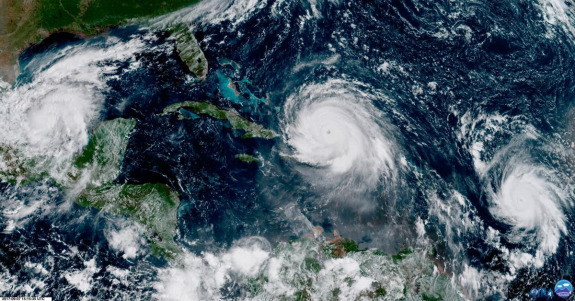
What Does EDO Research?
Research Groups
Atmosphere-Ocean-Arctic Sea Ice Interactions
By working across inter-annual timescales using multiple satellite observations, global reanalysis products, and CESM simulations, this group seeks to address the interactions between sea ice, cloud-precipitation properties, and the Arctic energy budget, and to understand the cause and effect relationship between atmospheric moistening and changes in sea ice. Please contact Ali Behrangi in Hydrology and Atmospheric Sciences with any questions, comments, or if you would like to be involved.
Drylands Remote Sensing
This group aims to (1) explore novel combinations of sensors and techniques (e.g., solar-induced fluorescence, thermal, microwave, hyperspectral, and LiDAR) across a range of spatiotemporal scales to gain new insights into dryland structural and functional dynamics; (2) develop algorithms that are specifically tuned to dryland ecosystems by utilizing expanded ground observational network data; (3) expand ground observational networks to better represent the heterogeneity of dryland systems and enable robust calibration and evaluation; and (4) couple remote sensing observations with process-based models using data assimilation to improve mechanistic understanding of dryland ecosystem dynamics and to better constrain ecological forecasts and long-term projections. Please contact Bill Smith in the School of Natural Resources and the Environment with any questions, comments, or if you would like to be involved.
Aerosol-Cloud-Precipitation Interaction
Through an integrative analysis of satellite and ground-based observations, aircraft in-situ measurements, and model simulations, this group will investigate aerosol, cloud, radiation, and precipitation and their interactions, the understanding of which is critical for improving predictions of future climate changes. Please contact Xiquan Dong in Hydrology and Atmospheric Sciences with any questions, comments, or if you would like to be involved.
Advanced Computational Analyses in Earth Science
This group seeks to apply machine learning and artificial intelligence methods to (1) build novel predictive models from satellite observation, field sensor networks, and airborne sources; and (2) design, control, and manage/operate field sensor networks, satellite constellations, and unmanned aerial and underwater vehicles to compile critical new environmental data. In addition, the group plans to (3) perform visualization and dimensionality reduction to aid in fundamental understanding of environmental processes and to determine critical cause and effect relationships. Please contact Jekan Thanga in Aerospace and Mechanical Engineering with any questions, comments, or if you would like to be involved.
Cryosphere and Climate
This group seeks to understand and quantify the links between regional climate, precipitation, tectonics, and the mass balance of ice sheets and glaciers, with initial activities focusing on the Gulf of Alaska region. These connections are critical to predicting future sea level rise in a warming climate; the work will also greatly increase the scientific return from satellite missions through the calibration and validation of models that such data rely upon. Please contact Jack Holt in the Lunar and Planetary Laboratory/Geosciences with any questions, comments, or if you would like to be involved.
Mass Change
This group focuses on the use of gravity to measure changes in water mass on Earth, thereby monitoring changes in the amount of water in large lakes and rivers, aquifers, soil, ice sheets and glaciers, and sea level. Goals include increasing science applications from NASA Gravity Recovery and Climate Experiment (GRACE) missions as well as developing new, more affordable, smaller, and more nimble technology via optomechanical accelerometers and interferometers, in order to play a key role in developing the next generation of NASA mass change observing mission and to lead the development of a CubeSat or SmallSat mass change constellation. Please contact Chris Harig in Geosciences with any questions, comments, or if you would like to be involved.
What is UA's Expertise?
Understanding the Earth
Modeling Earth systems; assimilating and analyzing data and images; Earth sciences research related to all aspects of Earth systems, processes, and changes.
Leading Major Missions
OSIRIS-REx (to asteroids), Phoenix and HiRISE (to Mars), James Webb Space Telescope, NSF Cyverse, SOCCOM in the Southern Ocean, and smaller missions.
Building Cutting-Edge Instruments and Developing New Technologies
Artificial intelligence-enabled satellite swarms, design of advanced cameras, radar and lidar systems, polarimetric insrtuments, biochemical floats, sensor calibration/validation, Biosphere 2 laboratory.
Educating our Community
Land grant university educational mission, large student population with high percentage of Hispanic stdents, unique translational capabiliteis from basic science to practical application, facility of working across disciplines, national leaders in disability access and inclusive course design, community engagement, member of University Climate Change Coalition

